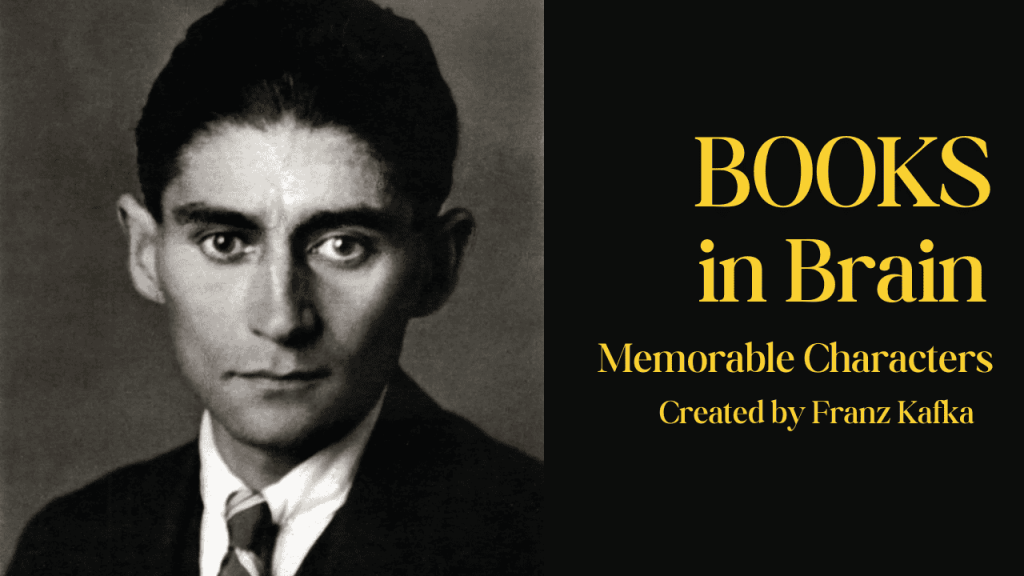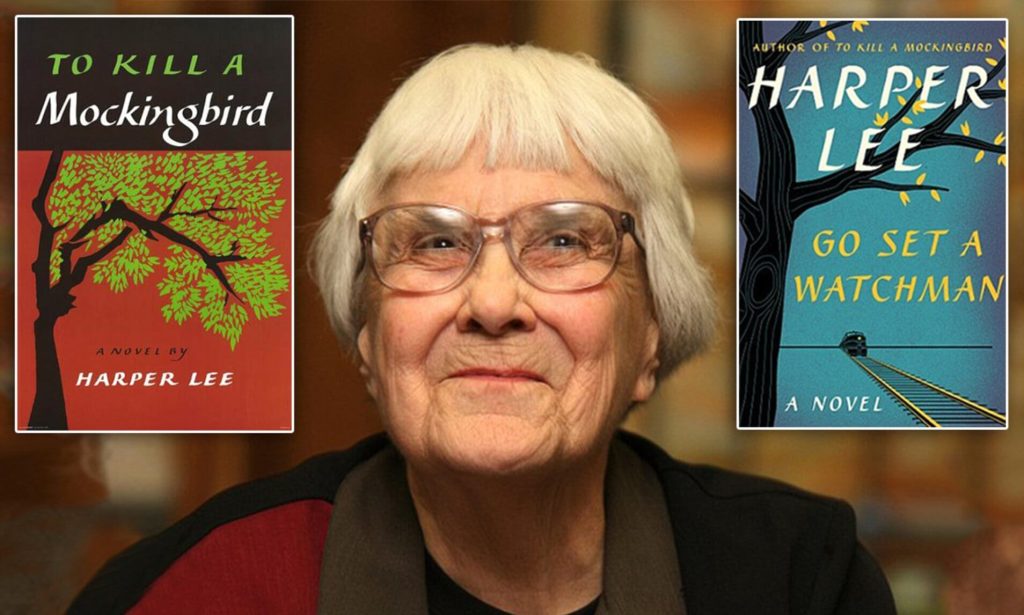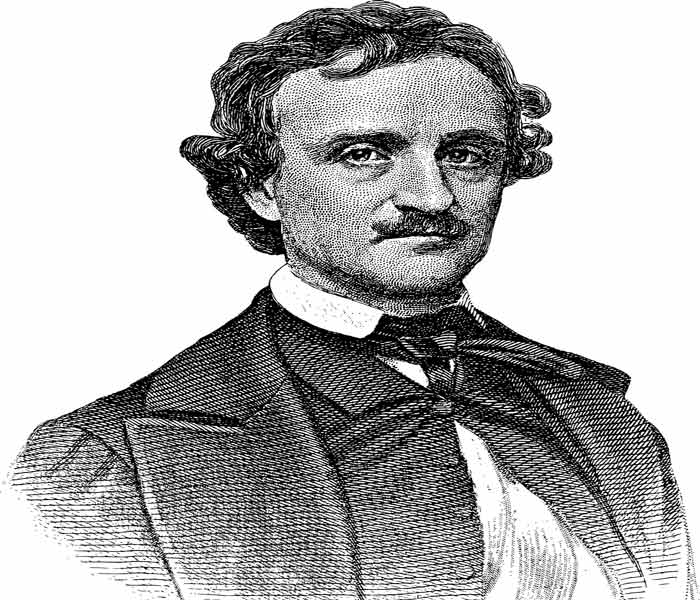Franz Kafka (1883–1924) was a German-speaking Bohemian writer born in Prague. He is widely recognized for stories, such as The Metamorphosis, The Trial, and The Castle.
In his writings, Kafka created unforgettable characters like Gregor Samsa, Josef K., and The Hunger Artist who embody the struggles of the human condition. These figures resonate with readers on a deep, existential level.

One of the most fascinating facts of Kafka’s life is that, despite his immense talent, he published only a handful of works during his lifetime. Even he requested that his manuscripts be destroyed after his death. Thankfully, his friend Max Brod preserved them. It ensures Kafka’s enduring legacy as one of the 20th century’s most influential writers.
Who Are the Most Memorable Characters Created by Franz Kafka?
Now, let’s take a look at some of these iconic characters in more detail.
1. Gregor Samsa (The Metamorphosis, 1915)
Gregor Samsa is a young man who works as a hardworking traveling salesman. He is the only one in his family who supports his family financially. One day, Gregor wakes up and realizes he has turned into a giant insect. His body is strange and scary, and he can no longer work or even talk to his family properly.
After his transformation, Gregor becomes isolated and struggles with his new reality. His family, initially shocked, gradually becomes resentful as they see him as a burden.
Gregor’s story is powerful because his story captures the pain of alienation and the loss of identity. His transformation is a metaphor for how people can feel dehumanized by societal expectations or family pressure. His transformation into an insect is a symbol of how society can make someone feel like they don’t belong. Readers connect with Gregor’s emotional turmoil, even as his physical form is unrecognizable.
2. Josef K. (The Trial, 1925)
Josef K. is a simple bank worker living a normal life. One day, without any warning, he is arrested. The strange thing is that no one tells him why he is arrested or what crime he has committed. Josef tries to find answers, but he becomes trapped in a confusing and unfair legal system.
He goes to different officials, asks questions, and tries to defend himself, but nothing works. Josef feels more and more helpless as he realizes the system is impossible to understand.
What makes Josef K. unforgettable is how he represents the common person’s struggle against large, incomprehensible systems. His journey is filled with tension and despair, and Kafka leaves readers questioning the nature of justice and power.
3. The Hunger Artist (A Hunger Artist, 1922)
The Hunger Artist is a man who performs the act of fasting. He sits in a cage, refusing food for long periods, and draws spectators who marvel at his discipline. For many years, people have admired his talent and dedication. However, as times change, his art loses its audience.
The Hunger Artist becomes a tragic figure, misunderstood and unappreciated by society. He believes his fasting is a true art form, but society no longer appreciates it. In the end, he dies, still feeling that no one understood his passion.
This character resonates because he symbolizes the struggle of an artist who dedicates themselves to their craft, only to face indifference. His dedication to his craft, even when no one cares, is both inspiring and heartbreaking.
4. The Country Doctor (A Country Doctor, 1919)
The Country Doctor is a man who works in a rural area, helping sick people. His journey to the patient’s home is filled with surreal events, including a mysterious groom and magical horses.
One night, he is called to visit a patient. He finds a magical horse that takes him to the patient’s house. When he finally reaches the patient, he finds himself powerless to help and trapped in a nightmarish situation.
The character represents those who strive to help others but face impossible challenges. His story reflects the chaos and unpredictability of life, leaving readers with a sense of unease.
5. The Officer (In the Penal Colony, 1919)
The Officer is a loyal supporter of an old execution machine used in a penal colony. He passionately explains how the machine works. He believes it to be a just and effective method of punishment.
As times change, the machine becomes outdated, and people begin to reject it. The Officer, however, refuses to let go of his beliefs. In the end, his devotion to the machine leads to his tragic downfall.
This character stands out because of his blind loyalty to outdated ideals. He represents the dangers of adhering to traditions without questioning their morality or relevance. His unwavering faith in the machine is both unsettling and thought-provoking.
6. K. (The Castle, 1926)
K. is a land surveyor who is sent to work in a small village controlled by a mysterious castle. Despite his attempts to fulfill his duties, he is repeatedly obstructed by the village’s bureaucratic system.
He tries to contact the officials in the castle to do his job, but no one helps him. Every time he gets close to finding answers, more obstacles appear. K. feels frustrated and confused as he tries to understand the system that controls the village.
K. represents the human desire to find meaning and purpose in a world filled with obstacles. His story is a powerful commentary on the frustrations of dealing with bureaucracy and the search for belonging.
7. Odradek (The Cares of a Family Man, 1919)
Odradek is a strange, spool-like creature with a thread-like body. It moves unpredictably and seems to serve no clear purpose. The family man who narrates the story is both fascinated and disturbed by Odradek. He questions what Odradek is and where it came from.
Odradek represents the mysterious and unexplainable parts of life. Its odd appearance and behavior make readers feel uneasy and curious at the same time. Kafka never explains what Odradek truly is, leaving it open to interpretation.
8. The Bucket Rider (The Bucket Rider, 1917)
The Bucket Rider is a desperate figure who rides his empty coal bucket like a sled to beg a coal dealer for fuel during a harsh winter. He goes to a coal dealer’s house and pleads for help, but the dealer ignores him. The Rider is left to face the cold alone, helpless and forgotten.
This character is striking because of his vivid desperation and the metaphorical weight of his journey. The Bucket Rider highlights themes of poverty, neglect, and the struggle for survival. The image of the Bucket Rider is both sad and haunting.
9. The Doorkeeper (Before the Law, 1915)
The Doorkeeper appears in a short parable told in The Trial. He guards the entrance to “the Law”, barring a man from entering. The man waits for years, trying to gain access. In the end, just before the man dies, the Doorkeeper tells him that the door was meant only for him, and now it will close forever.
The Doorkeeper is really outstanding for his cryptic role in the story. He represents the elusive nature of justice and the human tendency to wait passively for answers instead of taking action. His story leaves readers questioning the nature of justice and the choices we make in our lives.
10. The Assistants (The Castle, 1926)
The Assistants are two men who are assigned to help K. in The Castle. However, their roles are unclear, and their behavior is often confusing and contradictory. They seem more like obstacles than helpers, adding to K.’s frustration.
These characters stand out for their absurdity and the chaos they bring to K.’s journey. They symbolize the unpredictable and often unhelpful nature of bureaucracy. Readers remember them for their strange and almost comical presence.
Conclusion
Franz Kafka’s characters, whether it’s Gregor Samsa’s alienation, Josef K.’s fight against an unfair system, or the Doorkeeper’s cryptic presence, each character offers a glimpse into the complexities of life.
If you want to explore stories that make you think about life’s mysteries and challenges, Franz Kafka’s works are a great place to start. His characters may be strange, but they feel surprisingly real. Which Kafka character will you discover next?


